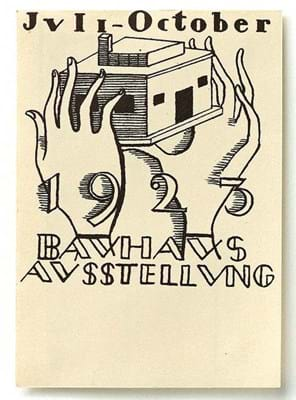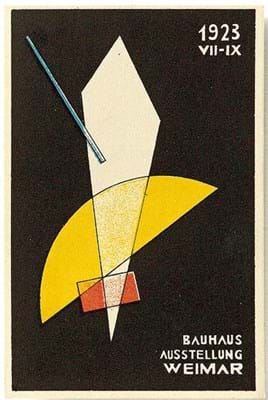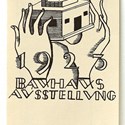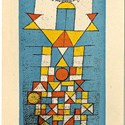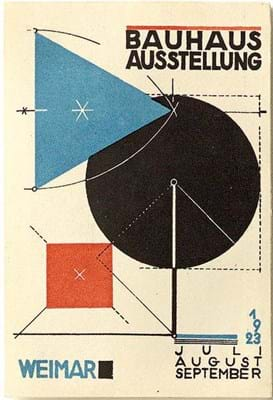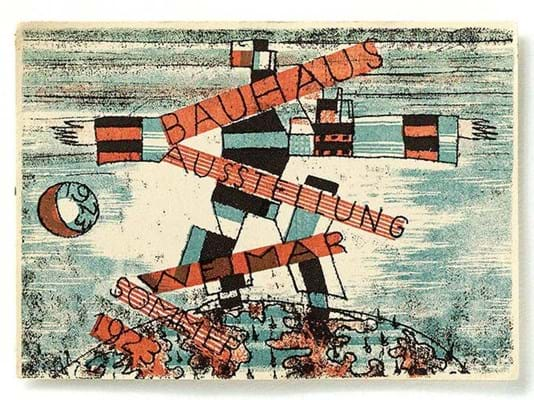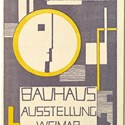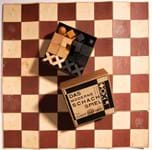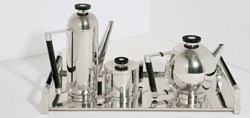An interesting cross-section of some of the big names was provided by a complete set of 20 lithograph postcards from 1923, published to advertise the important Bauhaus Exhibition of that year. Among the artists involved were Lyonel Feininger, Wassily Kandinsky, Paul Klee, László Moholy-Nagy and Oskar Schlemmer, some of whom contributed more than one postcard.
The rare set was one of the highlights of the sale at Grisebach (30% buyer’s premium) in Berlin on May 30. Estimated at €60,000-80,000, it found a new owner, a German private collector, for €165,000 (£148,650).
Individual postcards from the same series brought between €2000 (£1800) for one by the lesser-known artist Rudolf Baschant and €6000 (£5405) apiece for cards by Kandinsky, Klee and Moholy-Nagy.
Practical purpose
At Dorotheum (28% buyer’s premium) in Vienna a single Bauhaus work of art featured in the Design sale on June 17: a chess set from 1923-24, designed by Josef Hartwig, who was head of the wood and stone sculpture department from 1921-25.
According to Walter Gropius’ demands, Bauhaus objects had to be practical, long-lasting, cheap and beautiful and Hartwig’s wooden chess set fulfilled all prerequisites.
He abandoned the semi-realistic form of traditional figures and instead used a combination of basic geometrical shapes, crosses, circles and cubes. The set, with its original simple wooden box, was knocked down for the estimate of €4000 (£3605).
A higher result emerged at Quittenbaum (25% buyer’s premium) when another chess set came up. This was in its cardboard box designed by Joost Schmidt and titled Das moderne Schachspiel (The Modern Chess Set).
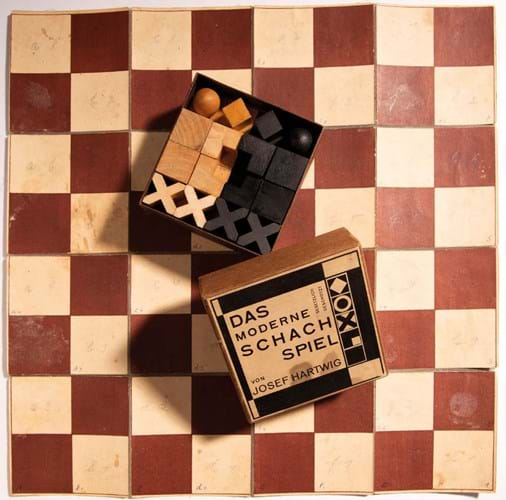
Josef Hartwig designed the geometrical figures and Joost Schmidt the box for this chess set from 1924– €20,000 (£18,020) at Quittenbaum.
As an extra attraction it came with a previously unknown variation of a chess board, made of cloth-covered paper, designed to fold up in such a way as to fit in the cardboard box. The hammer fell at an upper-estimate €20,000 (£18,020).


